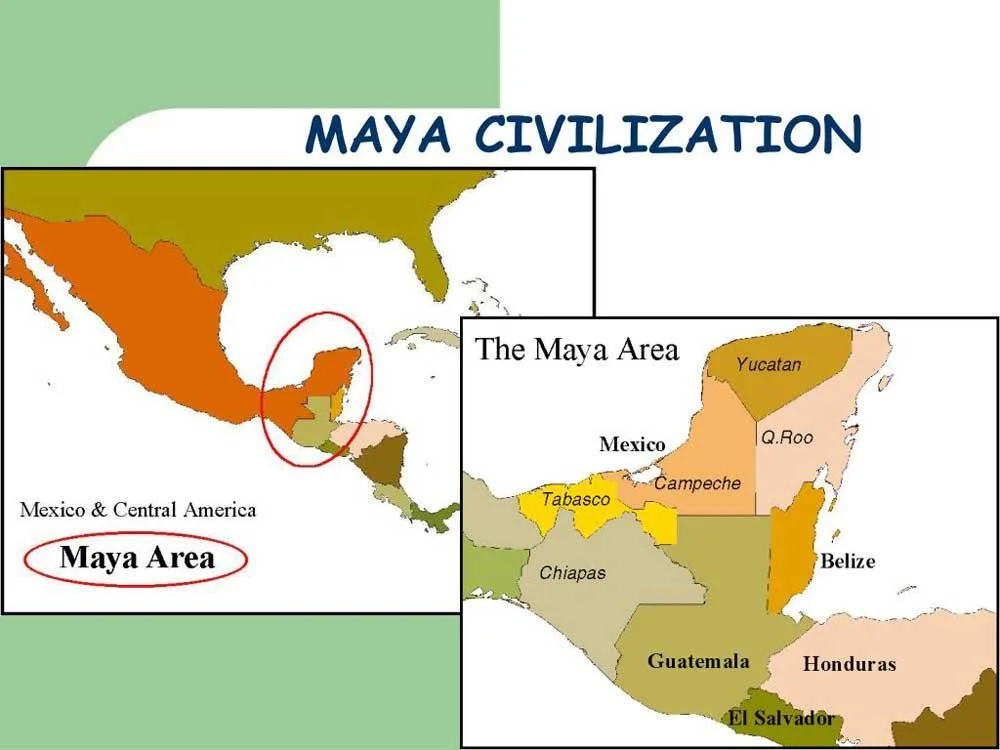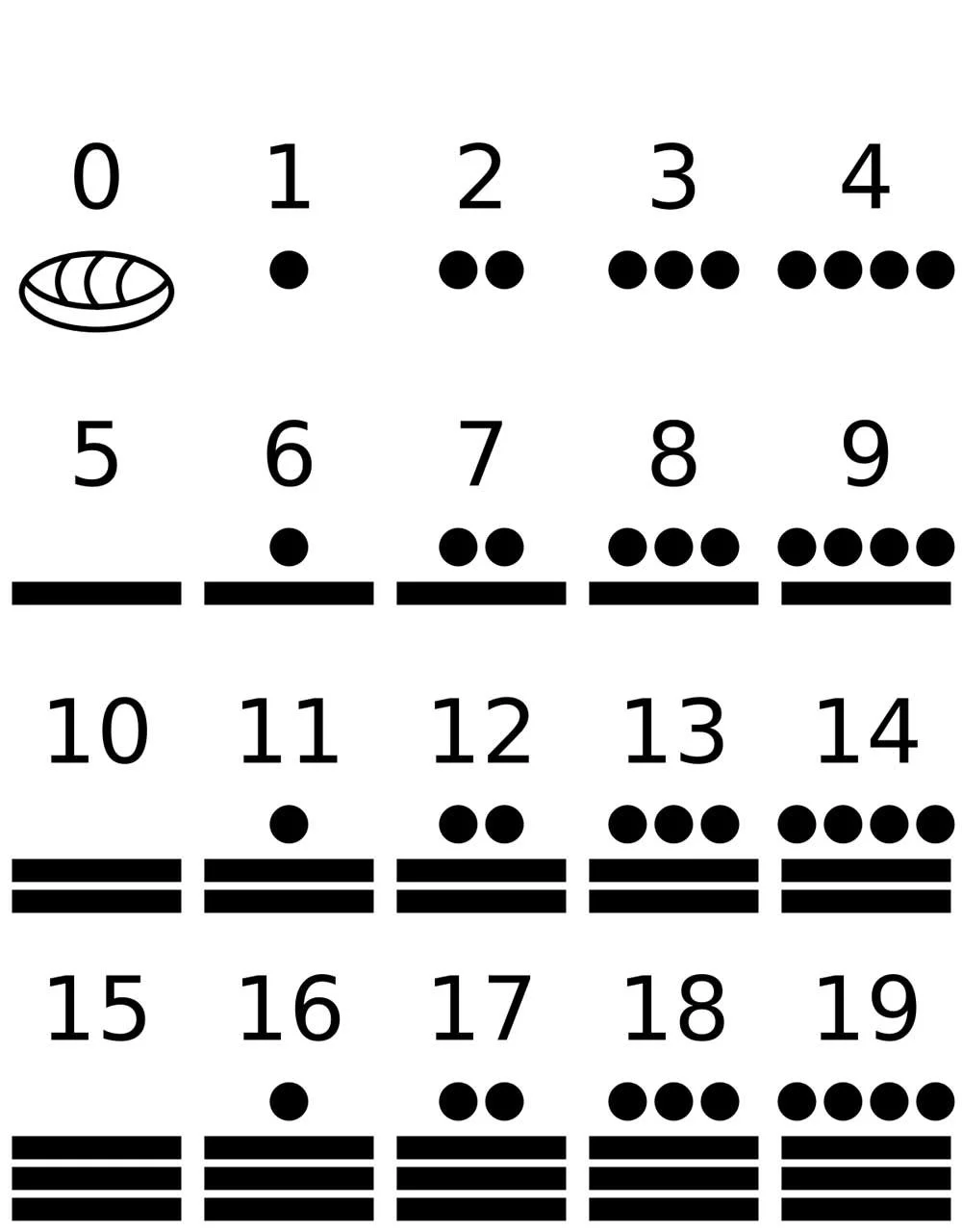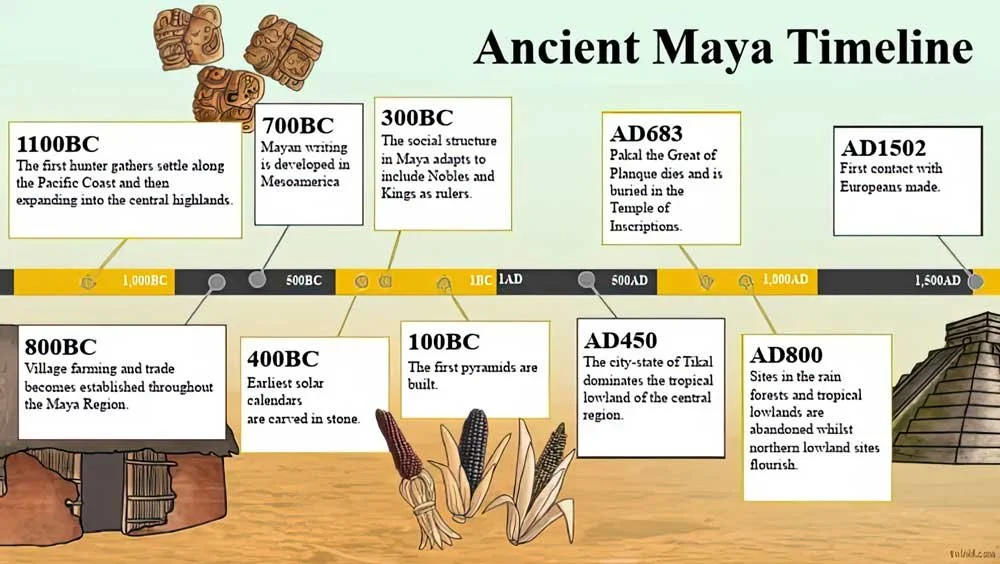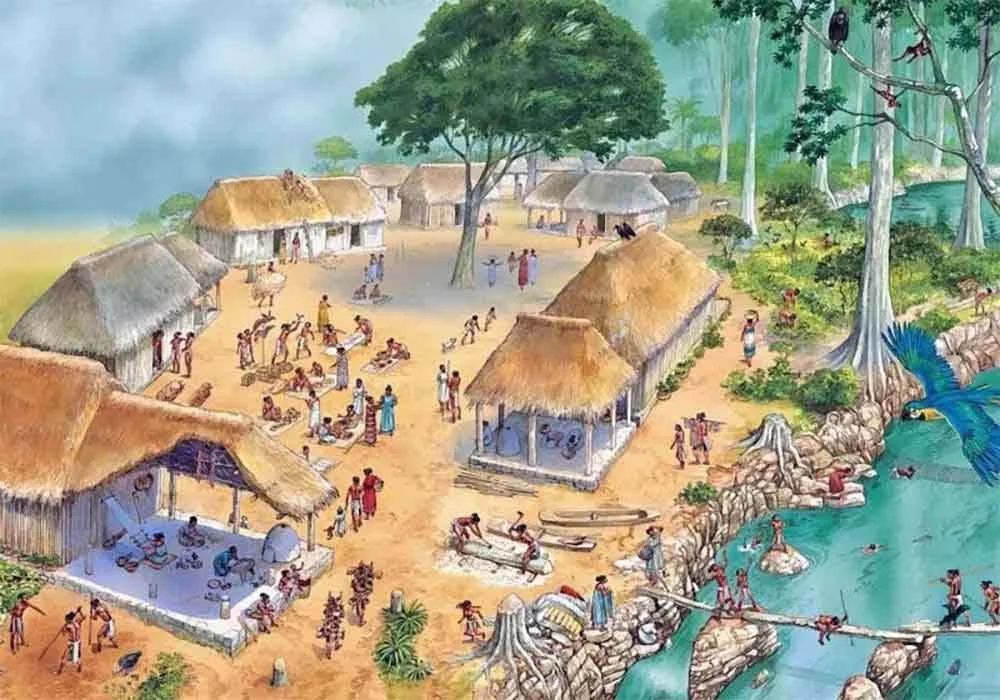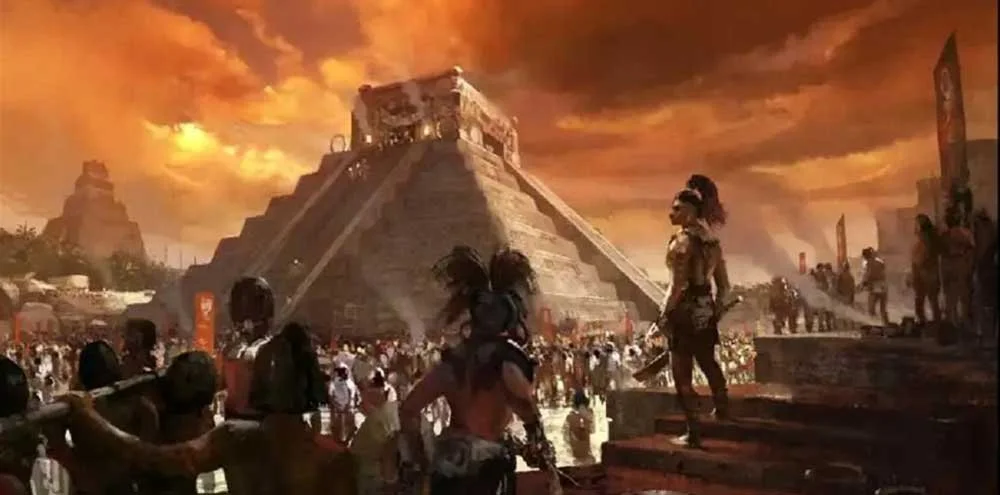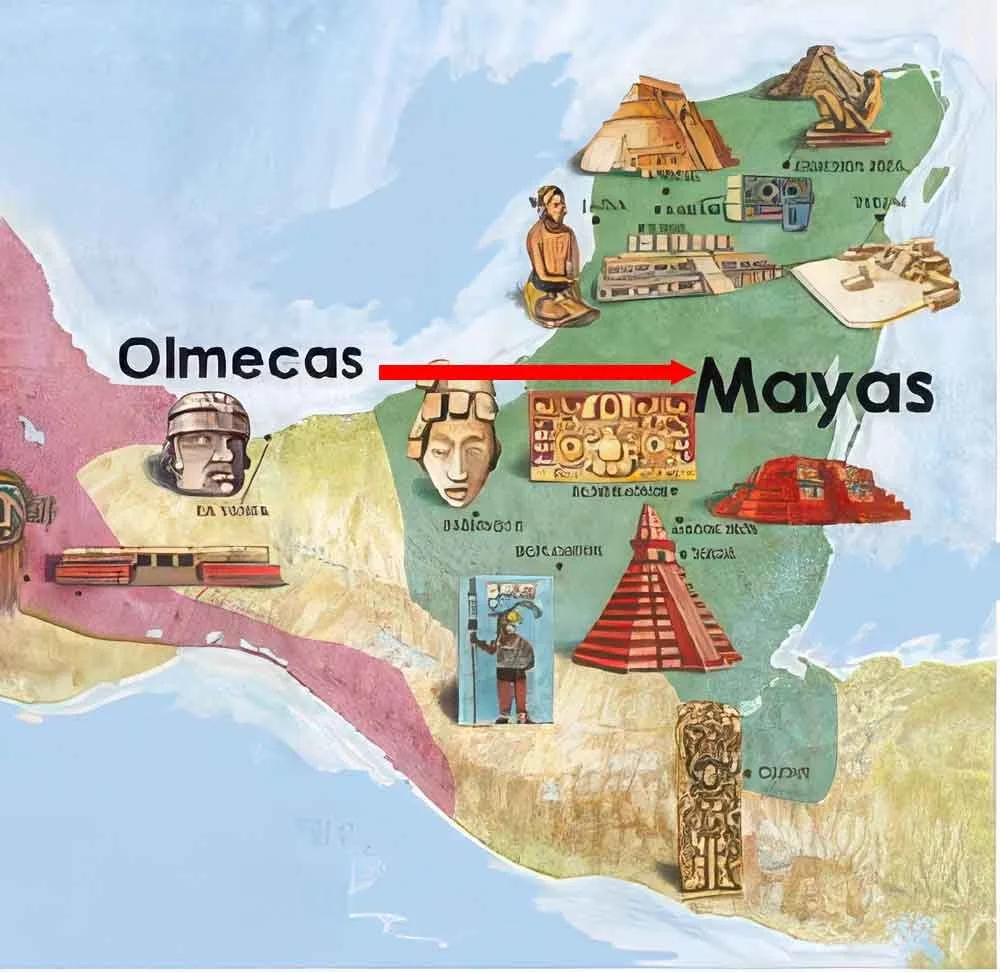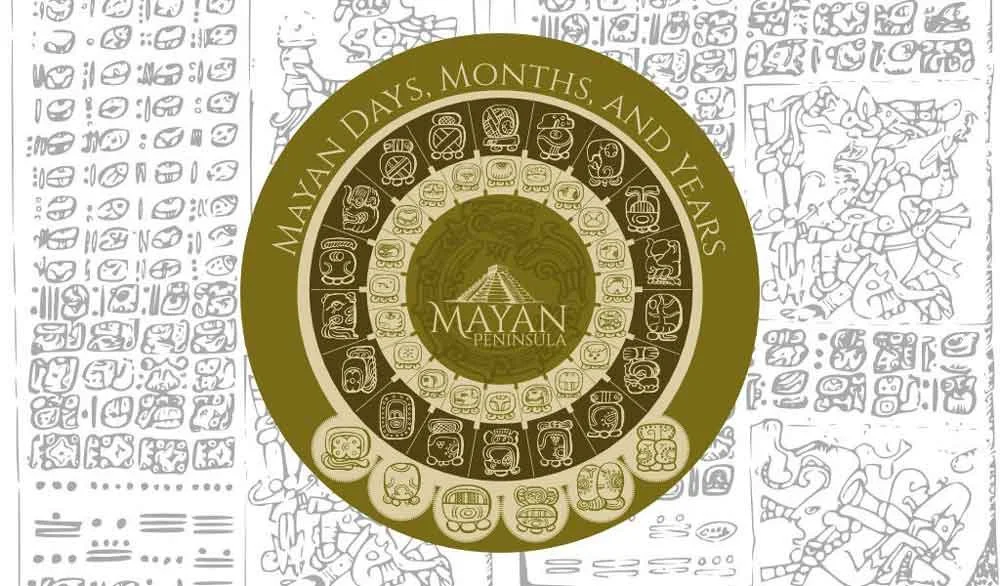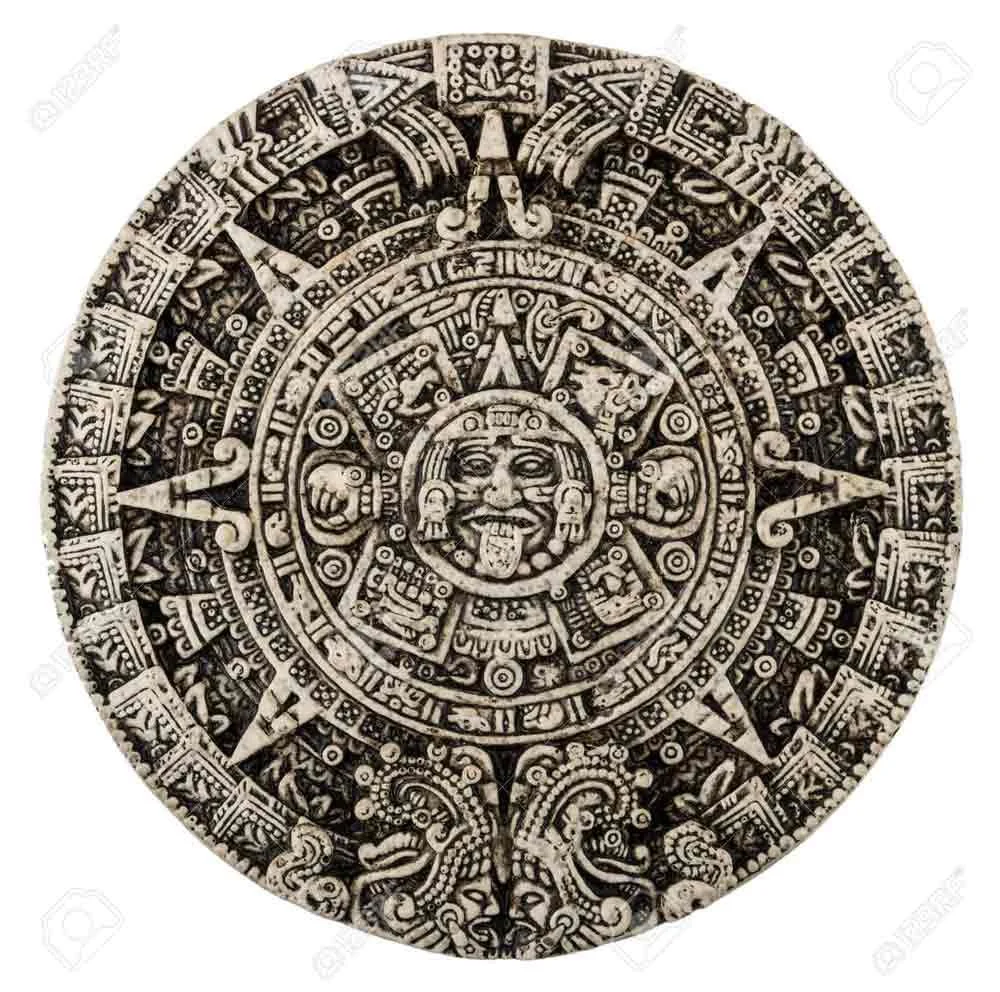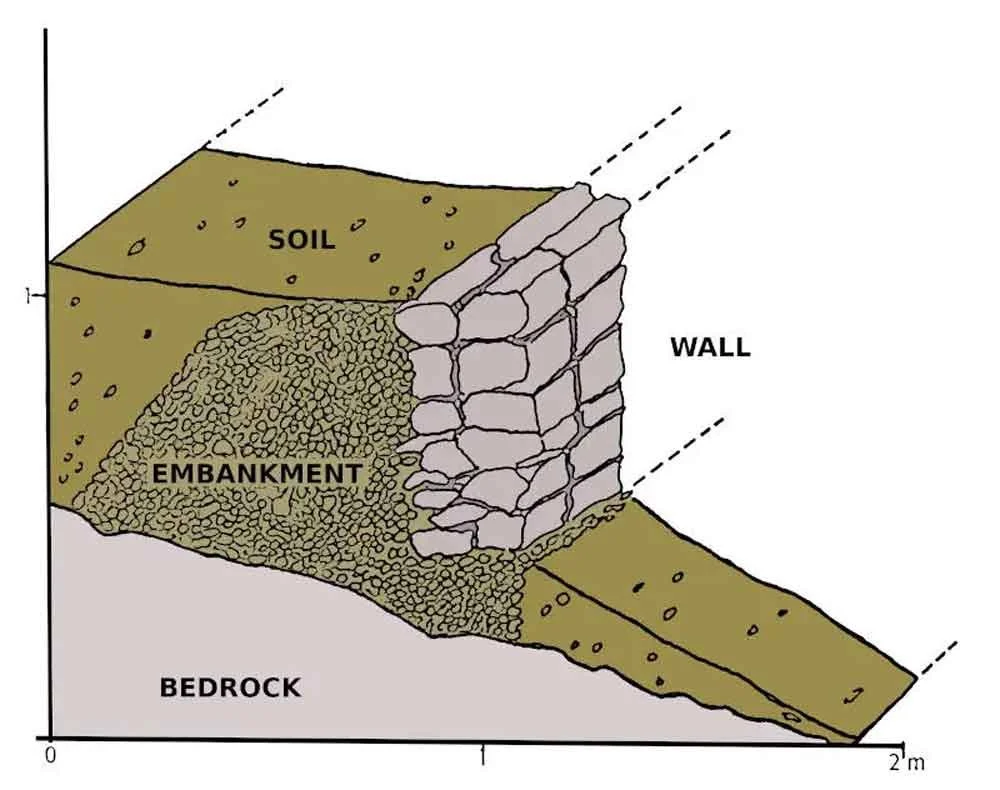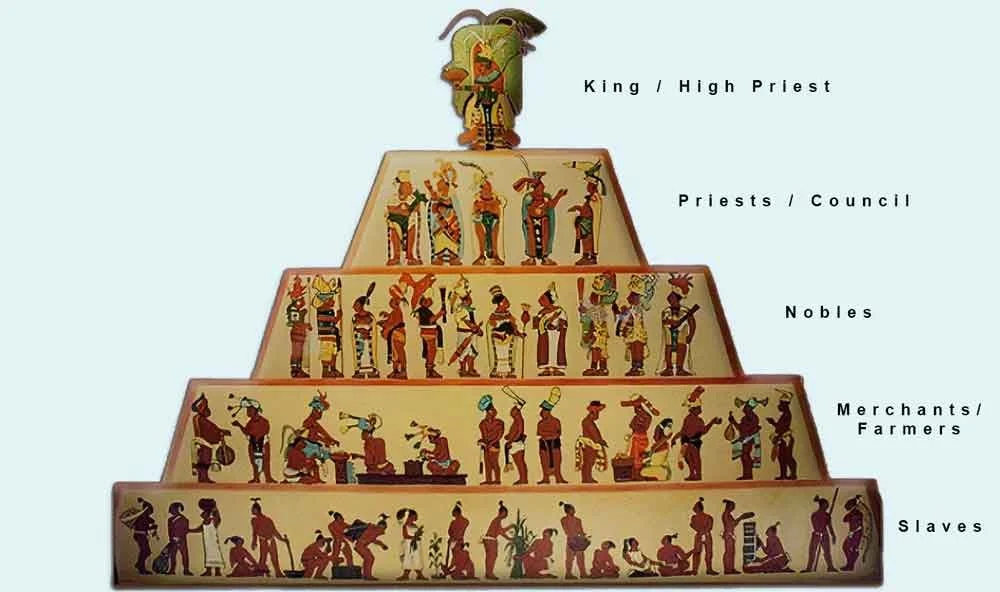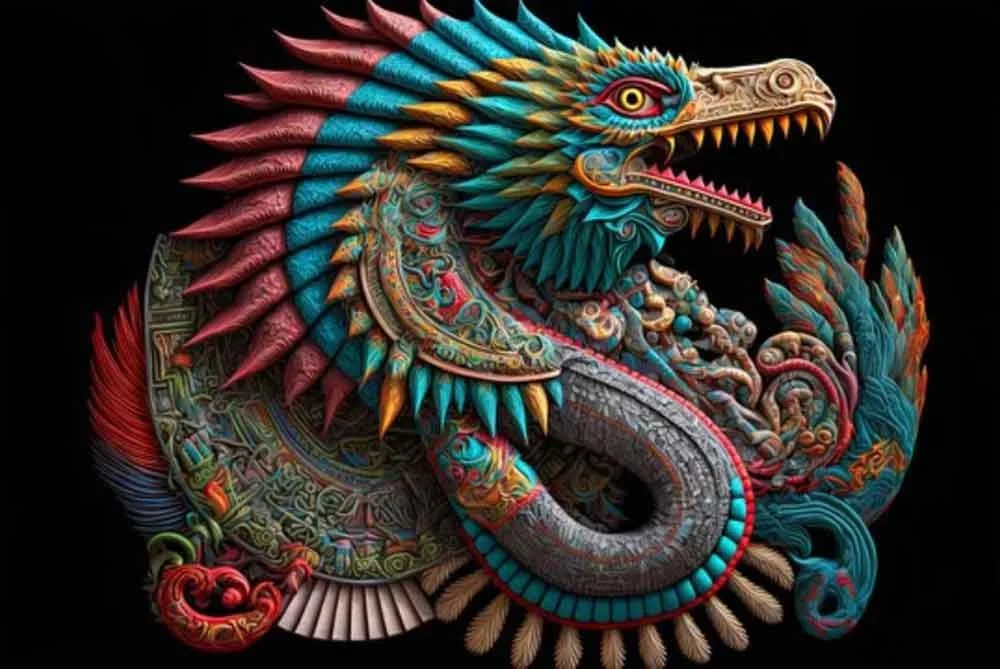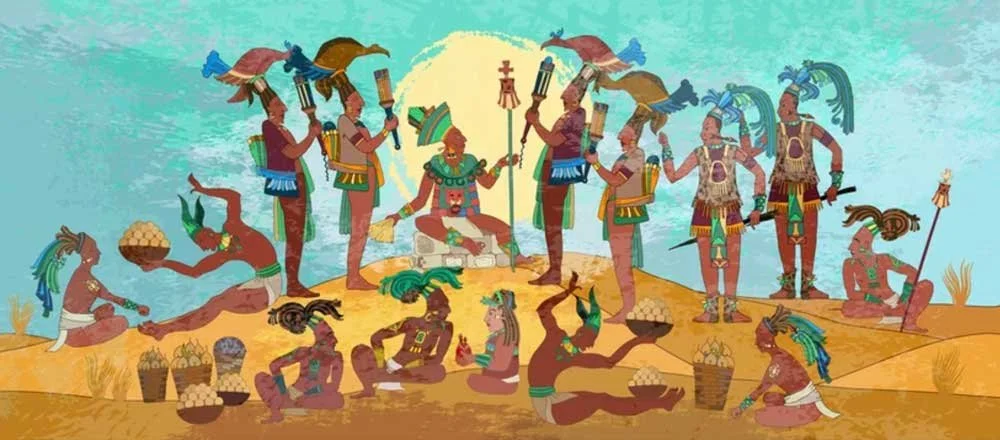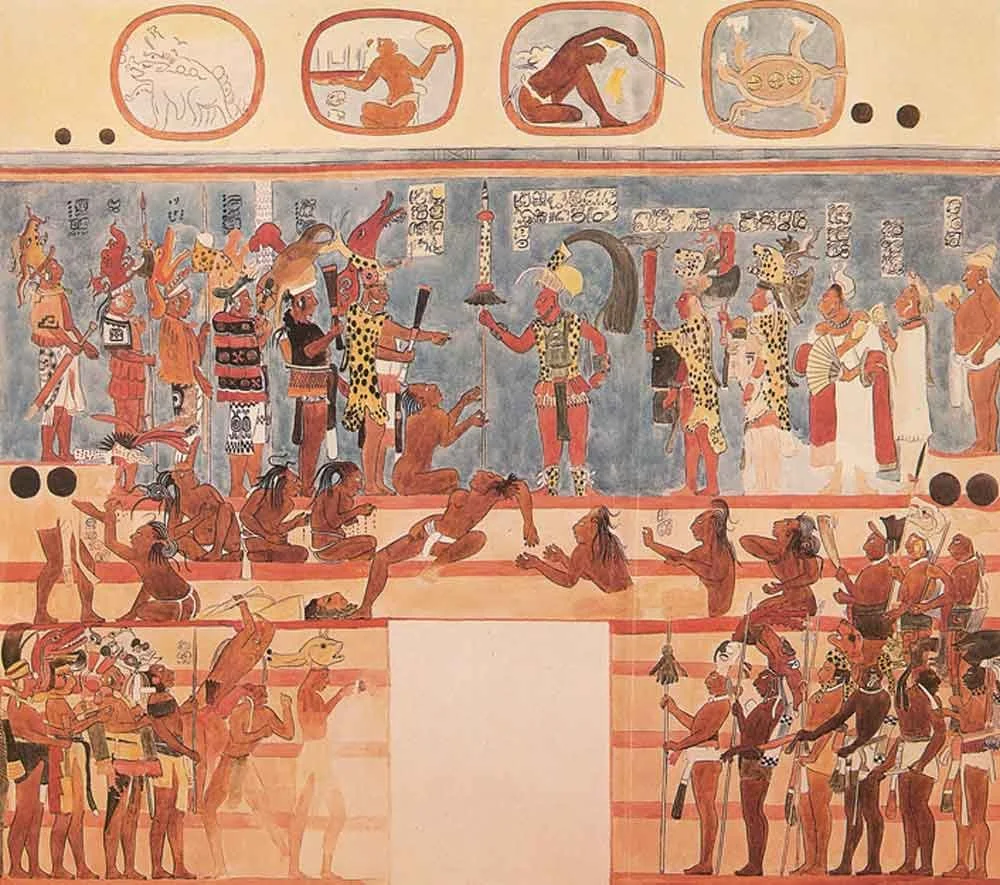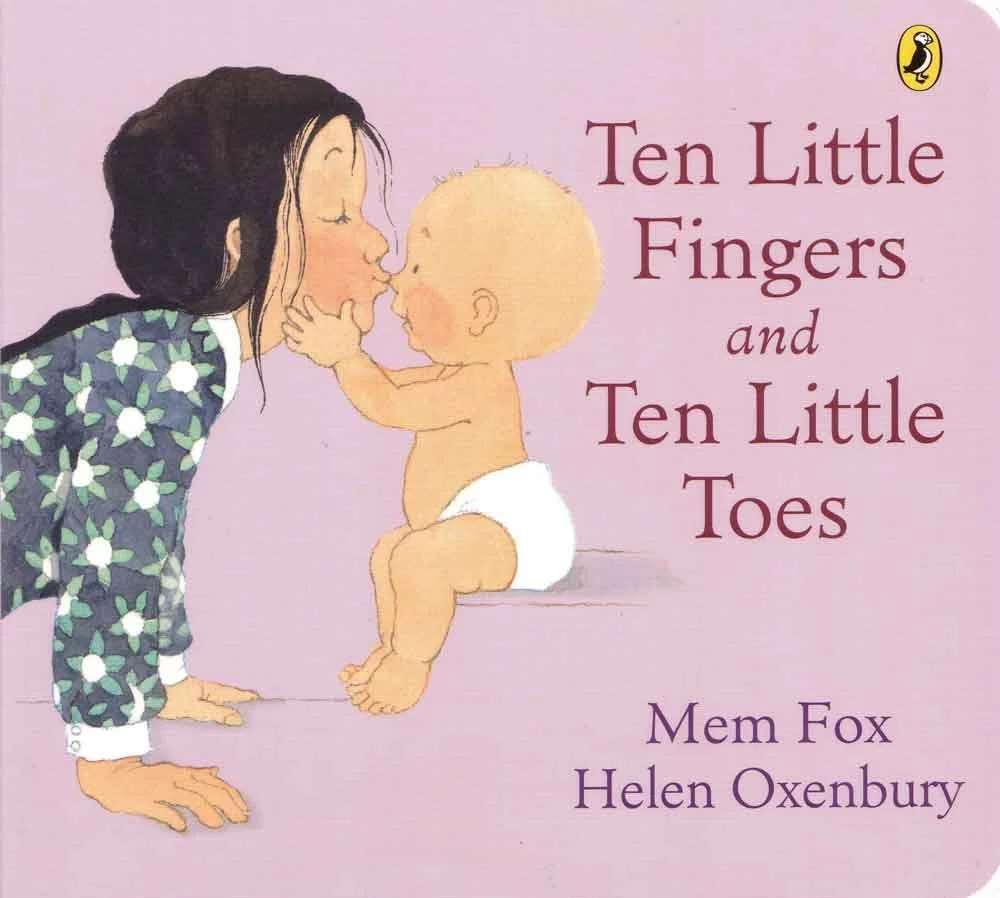THE MAYA
Look at the two timelines at top of this page. The dates for the Olmec and Maya civilizations are slightly different. Why might this be so?
Why are the Olmecs usually called the first big civilization in the Americas?
In the early years of the Mayan people, how did they live? (Hint: They hadn’t built any pyramids yet!)
From where—from whom—did the Mayans get ideas for math, building pyramids, and more?
How many months did the Maya have in their calendar?
How many days were in each Mayan month?
The Mayans were good mathematicians. What else were they good at?
Describe how Mayan society was structured. (Hint: Who had the most power? Who had no power? Who was in between?)
Was Mayan religion monotheistic (mono = one, so one god) or polytheistic (poly = many, so many gods)?
What happened to the Mayan civilization?
• READ •
THE MAYA
Mayan Civilization
Today, we're taking a look at the Maya in Central America.
One of the coolest things about the Maya was their amazing system of math.
Did you know that while modern math is based on tens—like 10, 20, 30—the Maya counted in 20s? That’s right, their entire numbering system was based on the number 20.
Picture bustling cities with towering pyramids, busy markets, and wide-open plazas. In this incredible place, the Maya were making huge discoveries in mathematics and using them in ways that were ahead of their time.
Their numbering system had three simple symbols: a shell for zero, a dot for one, and a bar for five. And with these three symbols, they could write any number.
How would the Maya write the number 13, using only dots and bars? 3 dots over 2 bars.
The Maya
About 4,000 years ago, something amazing started happening in Mesoamerica. The Mayan culture began to grow.
But guess what? It grew really, really slowly.
• In 1100 BCE the Mayans were hunter gatherers.
• In 100 BCE they built their first pyramid.
In fact, the Maya civilization developed slowly enough that the Olmecs are usually called the first big civilization in the Americas. Even though they started their civilization about 600 years after the Maya, as you can see on the timeline.
During this period of slow growth, what do you think Mayan life was like?
During those centuries of development, the Maya lived mostly in small villages and farmed. Fast forward more than 2,000 years to 250 C.E., and we find the Maya in their Classic Period.
THE CLASSIC PERIOD
This was when they built awesome things like giant pyramids and temples. Imagine huge stone buildings with awesome carvings, cool statues of their gods and leaders. The Maya are famous for both.
They didn’t just stop there. They built big cities with roads, bridges, places to play games, and big open squares. They even made beautiful sculptures, pottery, and shiny jewelry, especially for special occasions.
Where do you think the Maya got some of these awesome ideas?
Yeah, they used many ideas from the Olmecs.
MAYAN CALENDAR
The Maya were like ancient scientists. They used their awesome math skills to create a super detailed calendar system that could track the sun, moon, and planets.
So here is our first question using Maya math: How many months did the Maya have in their calendar? The Maya calendar had 18 months, and each month had 20 days.
Plus, they had five days at the end of the year that they considered really unlucky. During this time, they believed the boundaries between the real world and the supernatural blurred, which would allow evil spirits to interact with the living. Spooky, huh?
It’s truly amazing how accurate their calendar was. I mean, people in other parts of the world had similar calendars, but the Maya had no contact with them at all.
Why do you think people who lived so far apart ended up making similar things?
Maybe it’s because all people, no matter where they are, often have the same big questions. They all want to understand the world better. Or maybe they were just curious.
You already know the Maya were super smart with numbers. They were one of the first civilizations to use the number zero, which is really important for math today.
The Maya were also amazing farmers.
• Mayans developed terrace farming.
• How to build a terrace.
They came up with smart ways to grow more food, like building special watering systems and shaping hillsides to stop the dirt from washing away. These ideas were so good that later, other people started using them too.
Social Structure
In Maya society, just like in other civilizations we’ve studied, there were different levels. This symbol lets you know how many tiers the Maya had in their social structure.
At the very top were the rulers, nobles, and priests. They lived in huge, fancy houses and had a lot of power.
Then, there were the common people—like the farmers who grew the food, the craft makers who made all sorts of neat things, and the traders who traveled to sell stuff. They were the backbone of Mayan society.
• Mayan social structure.
Enslaved people were at the bottom of Mayan society.
They were usually people who were captured in wars or owed big debts, and they were used for big projects like building those amazing temples and palaces found in ancient Maya cities.
So, think back: Did some of the civilizations we’ve studied previously have slavery?
Slavery was present in most of the places we’ve studied, like ancient Rome and Egypt.
But it’s totally unacceptable today.
MAYAN RELIGION
Just like their social structure had different levels, the Maya way of life was really detailed and interesting. Religion was a big part of their everyday life, influencing everything they did and how they saw the world.
But do you think the Maya were monotheistic, or do you think they worshipped many gods?
The Maya believed in many gods and goddesses, each with their own special job.
Priests were like the religious superstars, doing all kinds of ceremonies and rituals and making offerings to make the gods happy.
What kind of offerings do you think the Maya made to please the gods?
The Maya offered valuable things like jewels, animals, even people to get good luck from the gods in farming, health, and battles. It was all part of their religious ceremonies.
So, who was offered to the gods? Mostly, it was prisoners from other tribes and civilizations. Like slavery, it’s unacceptable in today’s world, but for the Maya, it was part of their culture and how they understood their world.
What Happened
Even though Mayan culture remained strong in Central America for many more years, the last writing found by historians is dated 909.
So, what happened?
Historians believe droughts and maybe sickness led to starvation, ending the Maya civilization’s time as a Mesoamerican powerhouse. However, their influence on other societies in the region, even today, is obvious.
Have you been able to come up with an answer to this question: Why do you think the Maya math system is based on 20?
Historians generally agree that the Mayan math system is based on 20 because… that’s how many fingers and toes most people have
Ancient – Very old; from a long time ago in history.
Boundary – A line or edge that marks the limit of an area.
Calendar – A system people use to organize days, months, and years.
Carving – A shape or design cut into wood, stone, or another hard surface.
Ceremony – A special event with rules and traditions, often for religious or cultural reasons.
Civilization – A group of people with cities, writing, leaders, and culture.
Drought – A long time without rain that makes it hard for plants to grow.
Enslaved – Forced to work without freedom or pay.
Historians – People who study and write about the past.
Influence – The power to change or affect someone or something.
Mesoamerica – A region in Central America where ancient civilizations like the Maya lived.
Monotheistic – Believing in only one god.
Offering – A gift given to a god to show respect or ask for help.
Plaza – A large, open space in a city, often used for gatherings.
► COMPREHENSION QUESTIONS
— please answer with complete sentences
Look at the two timelines at top of this page. The dates for the Olmec and Maya civilizations are slightly different. Why might this be so?
Why are the Olmecs usually called the first big civilization in the Americas?
In the early years of the Mayan people, how did they live? (Hint: They hadn’t built any pyramids yet!)
From where—from whom—did the Mayans get ideas for math, building pyramids, and more?
How many months did the Maya have in their calendar?
How many days were in each Mayan month?
The Mayans were good mathematicians. What else were they good at?
Describe how Mayan society was structured. (Hint: Who had the most power? Who had no power? Who was in between?)
Was Mayan religion monotheistic (mono = one, so one god) or polytheistic (poly = many, so many gods)?
What happened to the Mayan civilization?








